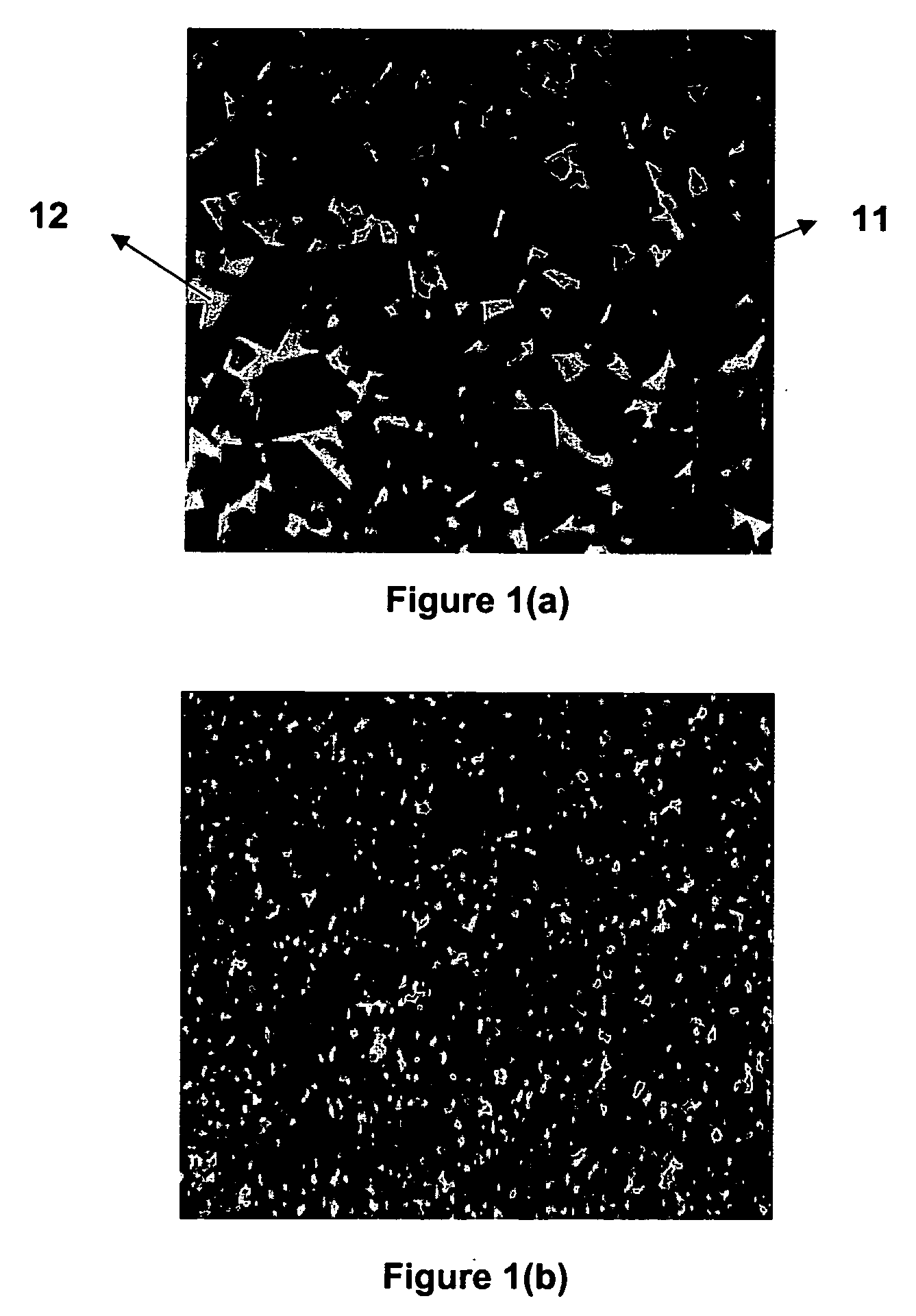Biocompatible cemented carbide articles and methods of making the same
a cemented carbide and biocompatible technology, applied in the field of cemented carbide articles, can solve the problems of difficult to produce useful articles from transition metal carbides using conventional cast-and-wrought metallurgy methods, difficult to achieve adequate strength of articles, and hot pressing technique was therefore considered impractical, so as to eliminate or minimize the toxic effects of binder alloys, and reduce the concentration of binder. the effect of abrasion resistance, strength and toughness
- Summary
- Abstract
- Description
- Claims
- Application Information
AI Technical Summary
Benefits of technology
Problems solved by technology
Method used
Image
Examples
Embodiment Construction
[0037] Embodiments of the present invention relate to cemented carbide articles having a zone at and near all surfaces of the article that is depleted of the binder. Embodiments of this invention also include methods of fabricating cemented carbide articles with binder-depleted zones at and near the surface. Embodiments of this invention include articles that are assemblies of binder-depleted cemented carbide articles joined or attached to articles made of other materials including metals and alloys, wood, plastics, ceramics, etc. Embodiments further include binder-depleted cemented carbide articles that have been coated with hard coatings such as TiN, TiCN, TiAlN, Al2O3, CrN, HfN, DLC, etc. using commonly used techniques such as chemical vapor deposition (CVD), physical vapor deposition (PVD), and variants thereof. Embodiments include single coatings or multiple coatings of any or all of the types of compounds noted. Embodiments of this invention also include binder-depleted cement...
PUM
| Property | Measurement | Unit |
|---|---|---|
| weight percent | aaaaa | aaaaa |
| weight percent | aaaaa | aaaaa |
| weight percent | aaaaa | aaaaa |
Abstract
Description
Claims
Application Information
 Login to View More
Login to View More - R&D
- Intellectual Property
- Life Sciences
- Materials
- Tech Scout
- Unparalleled Data Quality
- Higher Quality Content
- 60% Fewer Hallucinations
Browse by: Latest US Patents, China's latest patents, Technical Efficacy Thesaurus, Application Domain, Technology Topic, Popular Technical Reports.
© 2025 PatSnap. All rights reserved.Legal|Privacy policy|Modern Slavery Act Transparency Statement|Sitemap|About US| Contact US: help@patsnap.com



